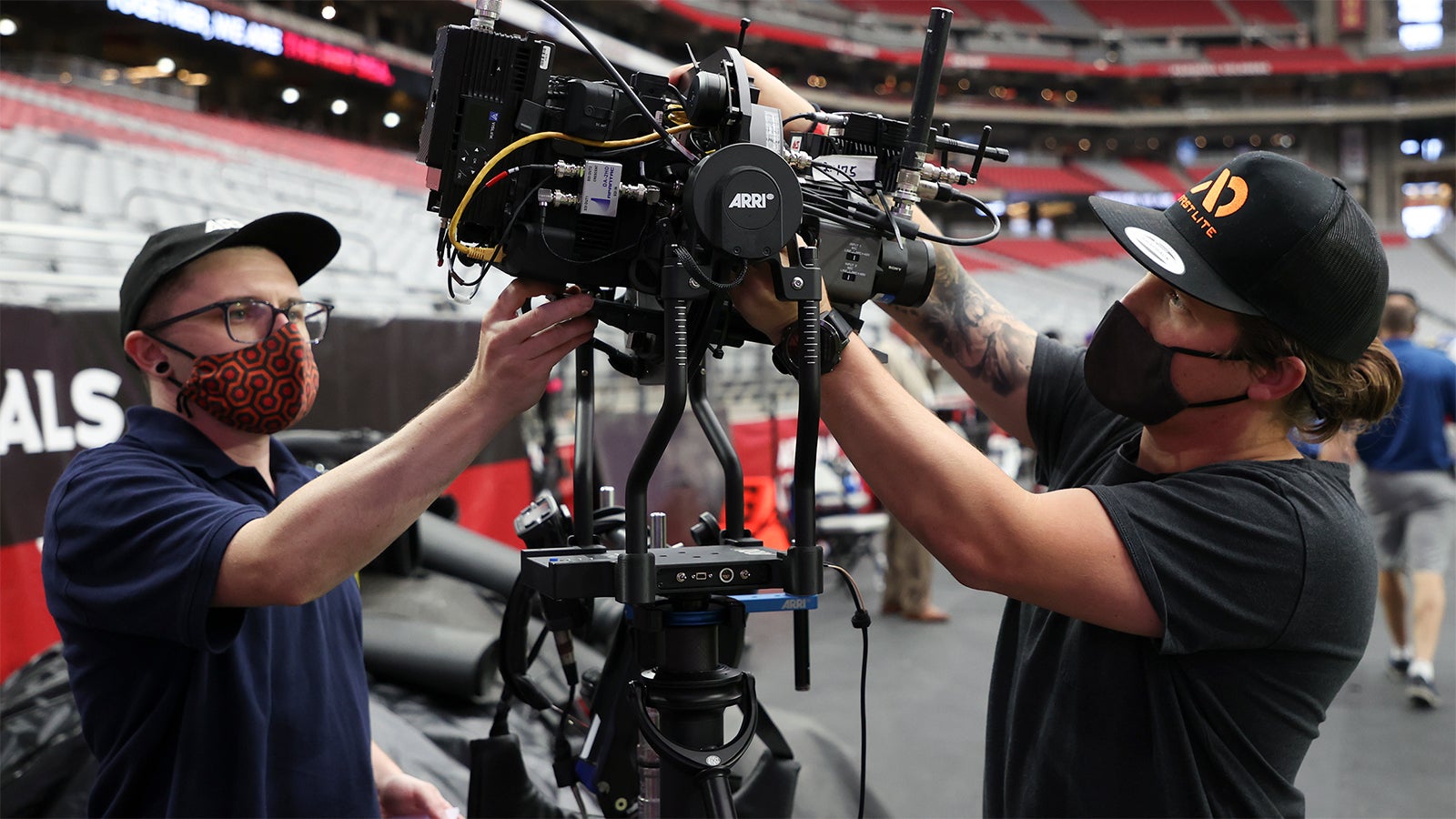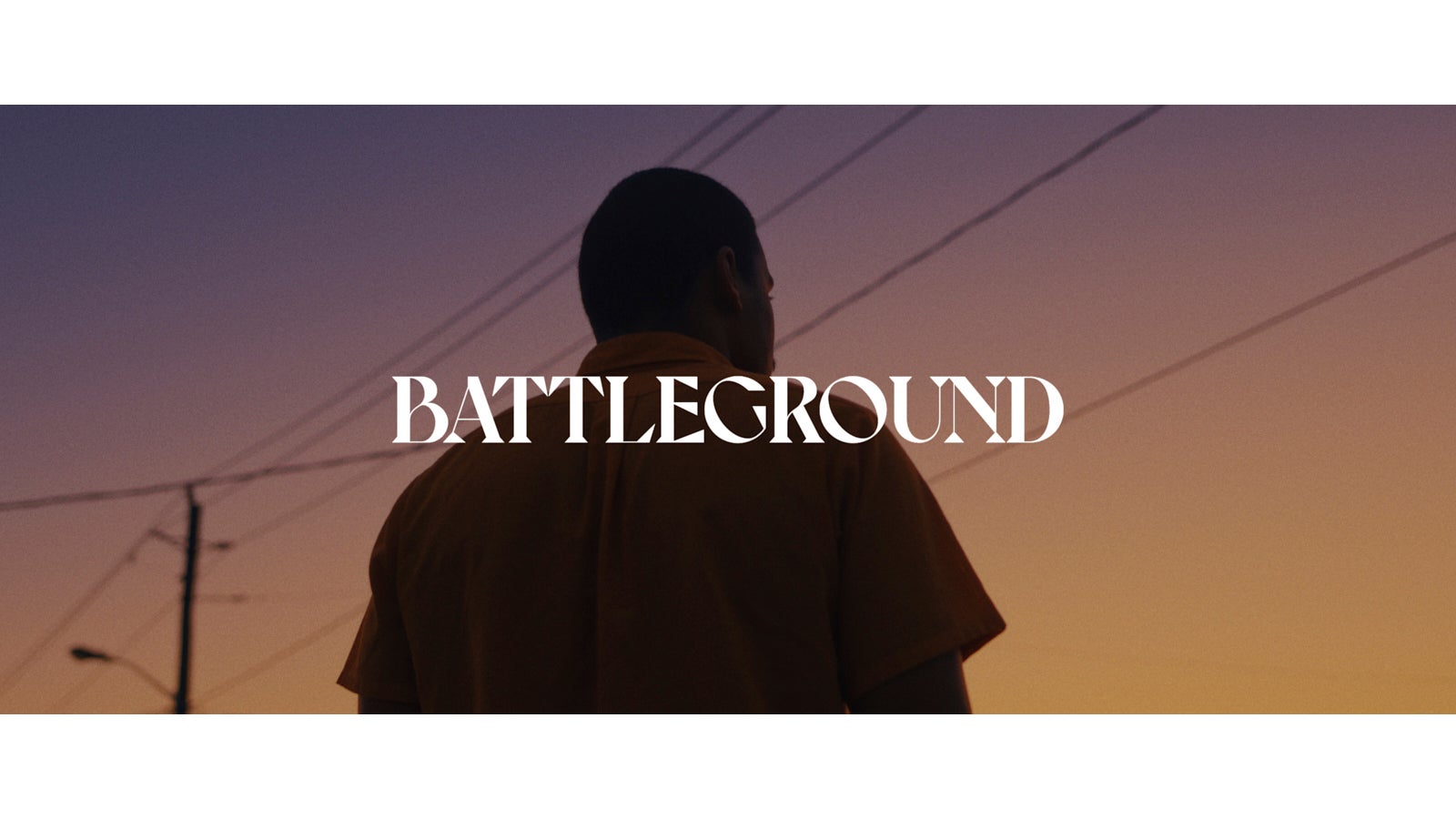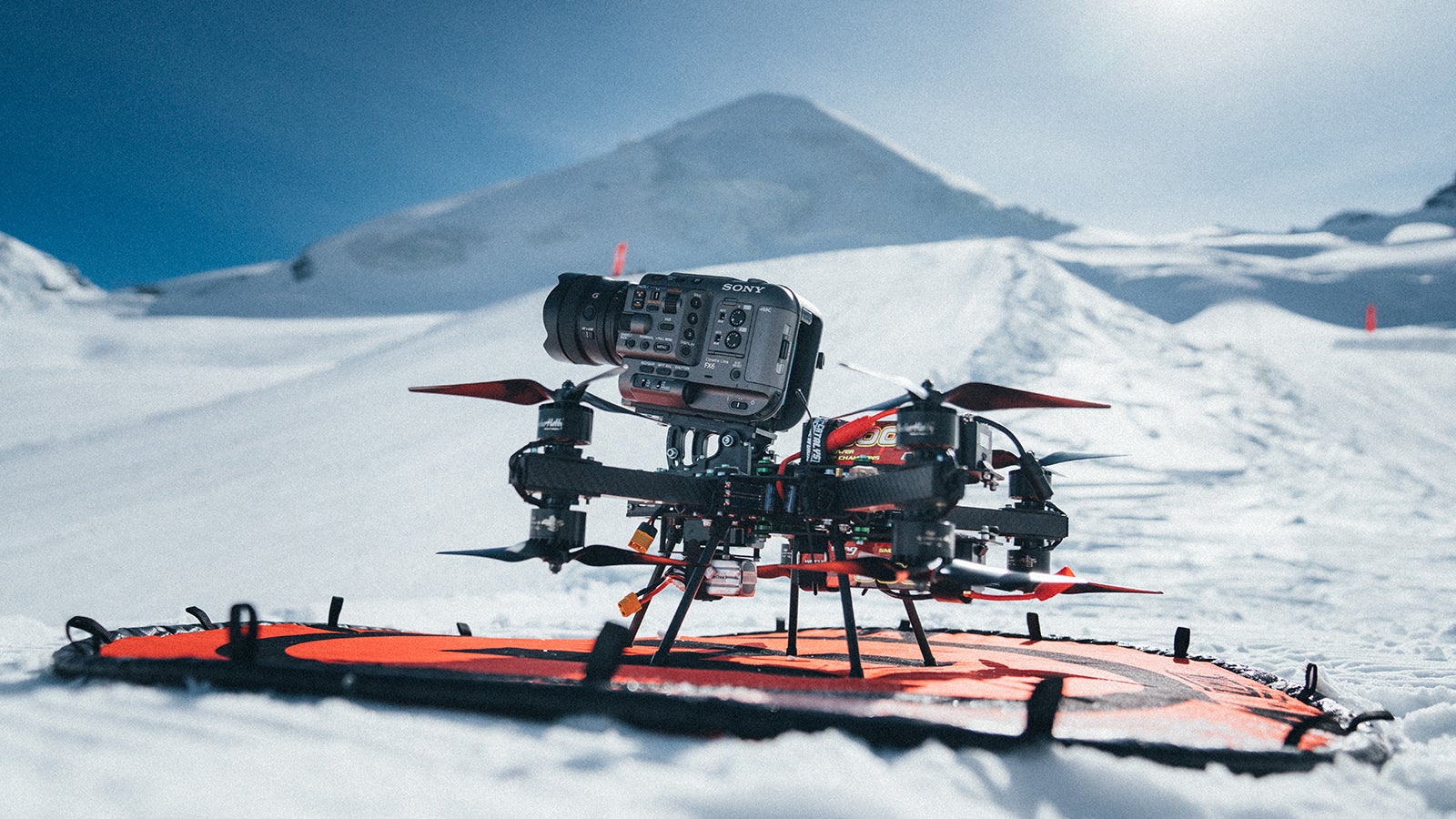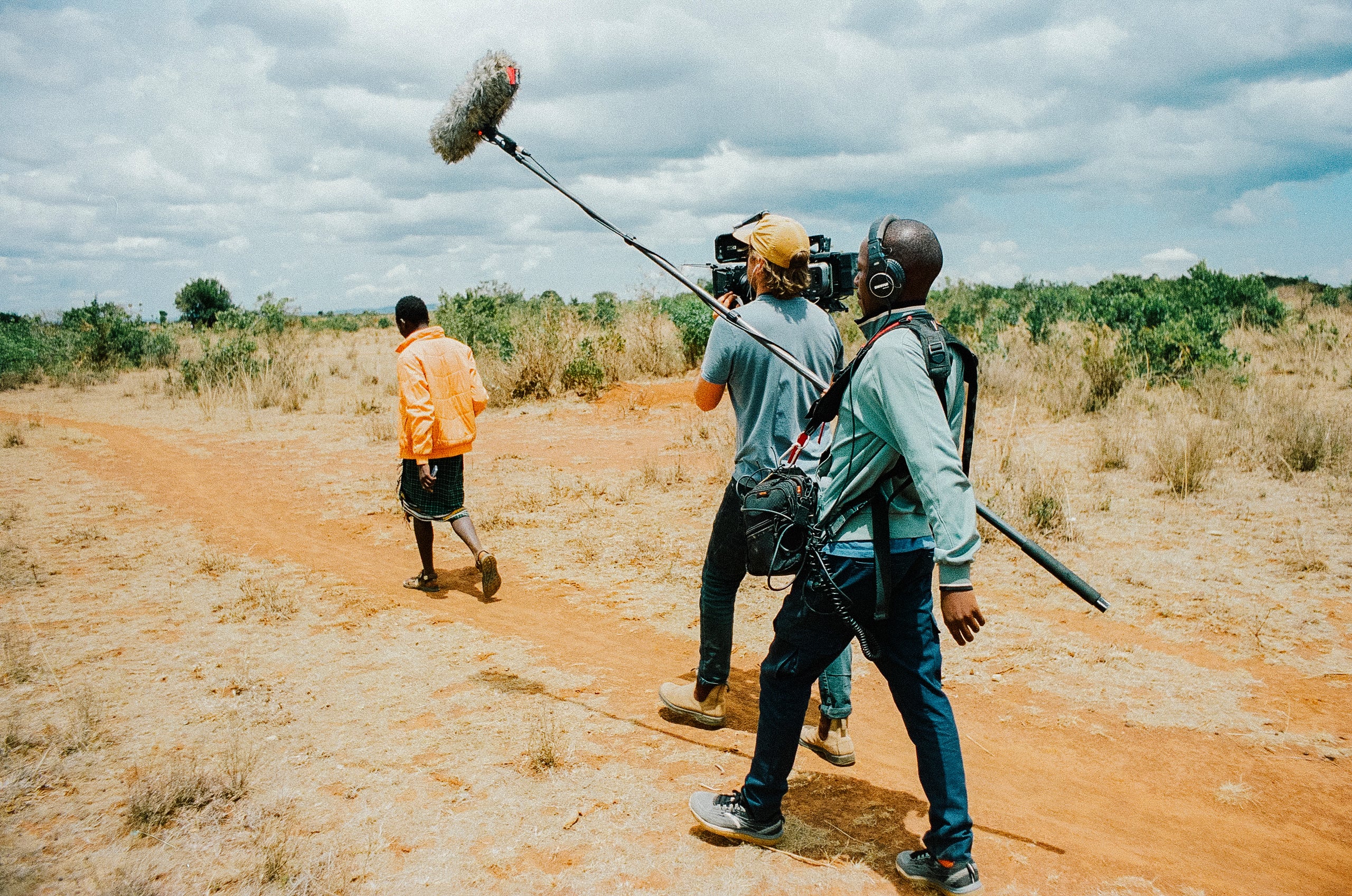
06-19-2024 - Case Study
Searching For Amani wins top doc awards at Tribeca and Raindance Film Festivals
By: SonyCine Team
Nicole Gormley is a documentary filmmaker who’s not afraid of going to some of the world’s most remote locations to discover stories that we all need to see. But some docs aren’t filmed, they are discovered.
What began as a project featuring kids living on the frontlines of climate change, was utterly transformed when Gormley and her team met a young Kenyan boy named Simon Ali.
From this meeting, Searching for Amani was born. Set to have its world premiere at the Tribeca Festival on June 8th, 2024, Searching for Amani follows Simon in his search for answers about the death of his father, a respected wildlife conservancy guide.
Most of this film was captured entirely by Gormley, who co-directs the film with Kenyan-based filmmaker Debra Aroko, and cinematographer Campbell Brewer, cut with footage recorded by Simon himself.
Shot on the Sony FX6 and FX9 over five years, Gormley and Brewer leaned on the unique feature set of these cinema cameras to bring this project to life.
We spoke with these filmmakers to discover how this journey came to be and how Sony’s FX line brought the subjects of this documentary into heroic view.
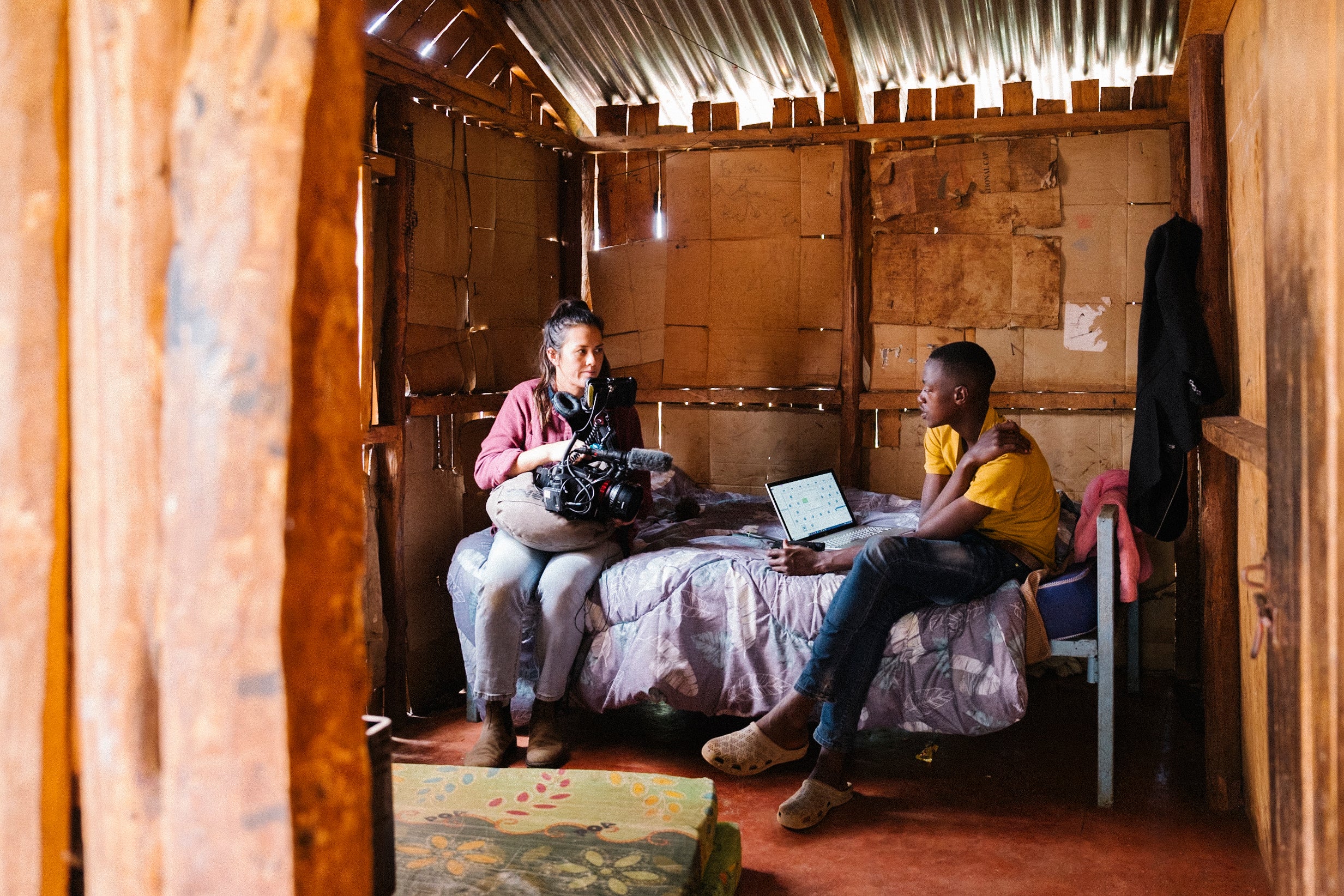
Searching for Simon
Before the global pandemic, Gormley and her team had traveled the world to craft the early stages of their initial documentary idea. These travels brought producer, Peter Goetz, to central Kenya, where a private wildlife conservancy and its surrounding community were hit especially hard by increasing drought.
“Peter started talking to different people within Kenya, within our network of friends and partners,” Gormley said. In that process, the conservancy owner that is featured in the film suggested that we talk to Simon knowing that he wanted to be a journalist.”
This first meeting happened in 2019, just a few months after Simon’s father, a conservancy peacekeeper, was killed in a conflict with the surrounding community.
“It was very, very raw and all so fresh. He was very much still processing his grief.”
“He didn't really know what had happened,” Gormley continued. “There was a lot of adult conversation about what happened, but no one actually told him how his father was killed.”
The team decided to leave Simon a camera of his own, a small 4K Sony handicam, and he would then go on to explore his own community, talking to neighbors and family.
“We were struck by his interest in telling his own story,” Gormley said. “It was just lot of baby steps that led us to the film.”
As the world shut down in 2021, Gormley and the team found themselves back in the heart of Kenya, one of the few places still open. There, her relationship with Simon and his story continued to grow, putting into motion the first real steps that eventually became Searching for Amani.
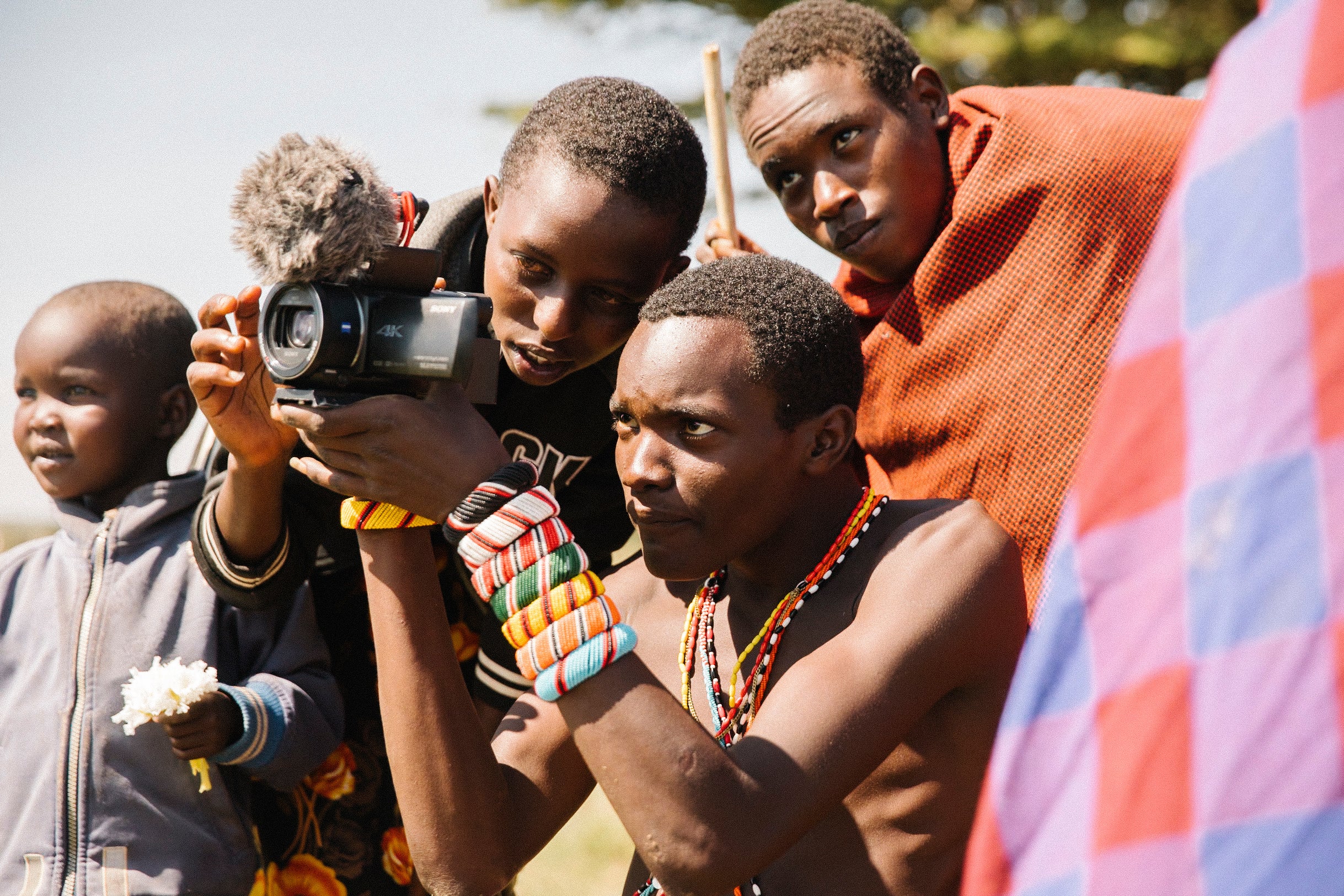
Searching For The Right Tools
For this film, Gormley and Brewer worked together as a duo. The idea was to bring cinema quality imagery to a documentary, but that required tools reserved for narrative productions.
In order to capture the delicate and nuanced story of Searching for Amani, Gormley and Brewer needed cameras that could work with a wide range of audio tools, were suited for working with cinema lenses, and could be operated by one person.
"We needed a camera that sometimes we would have an audio mixer and sometimes we wouldn't," Gormley said. "We needed a camera, that even shooting on an anamorphic cinema lens and camera package, Campbell could man on his own, or I could man on my own."
"Just by the unpredictable nature of what we were doing, we wanted to also make sure that we were always self-sustaining," Gormley said.
The Sony FX9 and then the FX6, when it was released, fit this set of needs. The team even made the bold choice to shoot on a set of 2x Kowa Anamorphic lenses. The inclusion of internal variable NDs was also a complete game changer that allowed Gormley and Brewer to capture one-of-a-kind moments in a cinematic look.
"There is a checklist of things that are must-haves," Gormley said. "I feel like (the FX6 and FX9 are) two cameras in particular, and now the BURANO, that are equipped with that, and that's just what we needed it to be able to do. And there's not a lot of other options out there."
"It was like magic shooting on that variable ND. It gave us complete control over our exposure." Brewer added. "We never had to stop down or deal with cycling ND stages. I typically never use any auto settings, but I explored using the auto ND for certain situations, which allowed me to move from a bright exterior to a dark interior without needing to pull my matte box or cycle an internal filter. To have my exposure change so subtly was a complete game changer."
Searching for Amani is a film that deals with the delicate subject of grief, meaning Gormley and Brewer didn't have the ability to re-record specific moments if the lighting was off. Everything had to be captured once or not at all.
"The story is about a 13-year-old investigating the murder of his father," Gormley said. "You cannot ask for people to say things again."
"You cannot ask for them to move into a better area where the light is actually working."
"It's a crazy amount of things that are going through your head when you're operating camera by yourself in a story you have no control over and you're just following," Brewer added.
The Sony FX9 and FX6, with their ability to capture images in a wide variety of lighting conditions, let the filmmakers focus on the story over technical hurdles.
"You don't have to think about your gear. You have to just think about getting the moment," Brewer said. "And if your gear can adapt to the environment or whatever the lighting is, then you just don't have to think about it. And you only think about the heart, the story, what people are saying.

Searching For Heroes
Pairing anamorphic lenses with powerful cinema cameras gives filmmakers many opportunities to create cinematic imagery. But in a documentary film, these types of images go beyond making things look better. They provide the subjects with a unique view of themselves.
In Searching for Amani, the Sony FX6 and FX9, along with their anamorphic lens kit, brought this imagery to life, which Gormley and Brewer described as heroic.
“Nicole's vision for this film was to really push the A cam to be a real juxtaposition to Simon's camera. And so there’s this heroic look that we were able to capture Simon's story in.” Brewer said. “That, I think, really elevated the film. And that was just Nicole's vision, to kind of hero these kids.”
“We wanted to juxtapose Simon’s camera with this heroic view of how they are living,” Brewer explained. “It was really cool to show them footage from the EVF and then watch how they reacted when they saw themselves in Cinemascope. I believe it shifted how they saw themselves-- as the main characters of their story. That’s the power of cinema to me, making the seemingly ordinary, extraordinary.”
“Throughout production, we could tell they were processing who they were in the world, like a mirror was being held up, and they could see their lives in this new magnitude – I just can’t wait for them to see themselves on the big screen.”
Searching for Amani will have its world premiere at the Tribeca Festival on June 8th, 2024.
Update: Gormley won the 'Best New Documentary Director' at Tribeca Film Festival and Searching for Amani won 'Best Documentary' at Raindance Film Festival.
